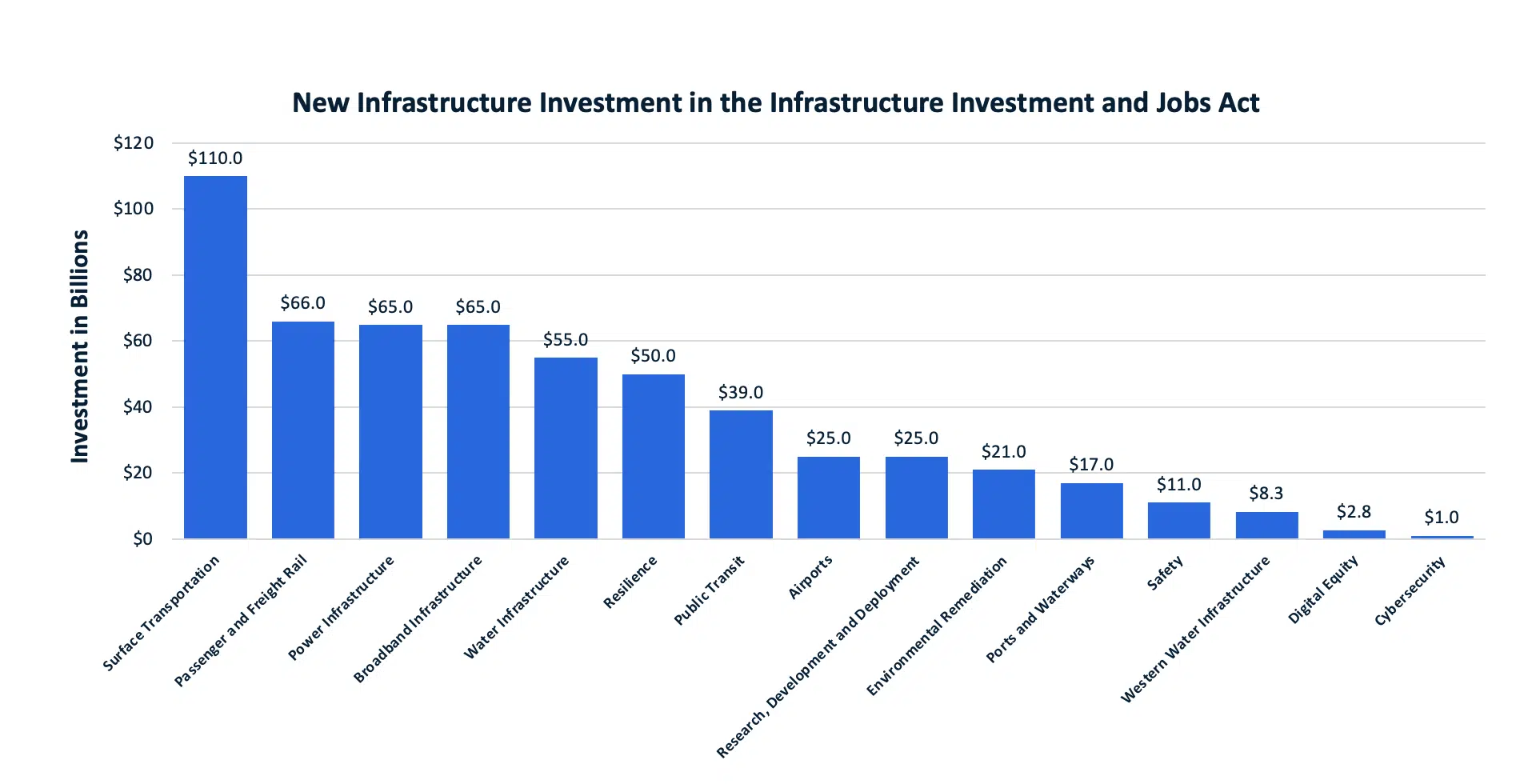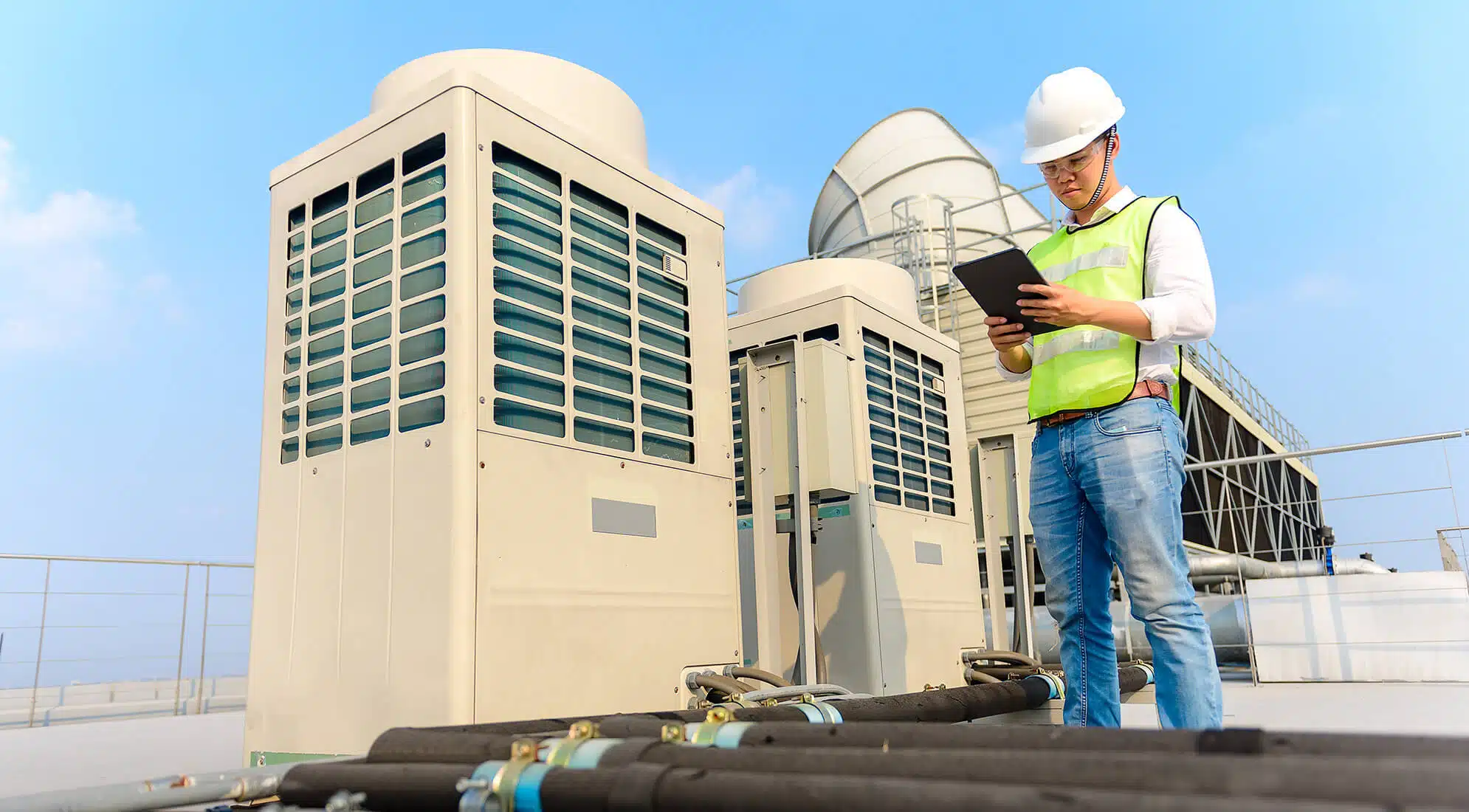The Infrastructure Investment and Jobs Act (IIJA), signed into law on November 15, 2021, is a landmark legislation that promises to reshape the American landscape. This $1.2 trillion package is set to fund a wide array of infrastructure projects, from roads and bridges to broadband and water systems from fiscal year (FY) ’22 – FY ‘26. This blog post aims to provide a comprehensive overview of the IIJA, focusing on its funding provisions.
The Genesis of IIJA
The IIJA is a result of bipartisan negotiations and was passed with a 69-30 vote in the Senate and a 228-206 vote in the House of Representatives, reflecting a broad consensus on the need for infrastructure investment. The legislation is a testament to the belief that infrastructure is not a partisan issue, but a national one.
Learn how innovative construction procurement solutions can help you use infrastructure funding to make a positive impact on your community in this informative, on demand webinar.
The Impact of IIJA
The IIJA is expected to have a transformative impact on the American economy. It is projected to create millions of jobs, boost economic growth and enhance the competitiveness of the United States on the global stage. The legislation also has a strong focus on climate change, with provisions aimed at reducing greenhouse gas emissions and promoting clean energy.
The IIJA also prioritizes equity, with provisions to ensure that the benefits of infrastructure investment are shared by all Americans, regardless of their zip code. The legislation includes a $1 billion Reconnecting Communities pilot program, aimed at addressing the historical inequities in transportation infrastructure.
The Infrastructure Funding Breakdown
The IIJA allocates $1.2 trillion over five years, with $550 billion in new federal investments. This new infrastructure funding is divided among various sectors:
- Surface Transportation: $110 billion is allocated for roads, bridges and major projects. This funding is aimed at repairing and replacing aging bridges, enhancing climate change mitigation, fortifying resilience and safety, and ensuring access for all users.
- Passenger and Freight Rail: The Act includes $66 billion for passenger and freight rail, marking the largest federal investment in passenger rail since the creation of Amtrak. This funding will address the repair backlog, modernize the Northeast Corridor and expand rail service to areas outside the Northeast and mid-Atlantic.
- Broadband Infrastructure: Approximately $65 billion is allocated to ensure every American has access to reliable high-speed internet. This includes building infrastructure in unserved and underserved areas, lowering prices for internet service and creating a low-cost option for families who can’t afford it.
- Power Infrastructure: $65 billion is allocated to rebuild the electric grid. This includes building thousands of miles of new, resilient transmission lines to facilitate the expansion of renewable energy.
- Water Infrastructure: $55 billion is set aside for water infrastructure. This funding will replace lead pipes and service lines, and upgrade and modernize America’s drinking water, wastewater and stormwater systems.
- Resilience: The IIJA provides more than $50 billion to make American infrastructure more resilient. This includes funding to protect against droughts, floods and wildfires.
- Public Transit: $39 billion is set aside to modernize public transit. This includes repairing and upgrading existing infrastructure, making stations accessible to all users, bringing transit service to new communities and modernizing rail and bus fleets.
- Airports: $25 billion is allocated for airports to repair aging infrastructure, reduce congestion and emissions, drive economic growth and create jobs.
- Research, Development and Deployment: The IIJA includes $25 billion to drive innovation and make the U.S. a leader in clean energy and climate science.
- Environmental Remediation: The Act invests $21 billion for environmental remediation. This funding will clean up Superfund and brownfield sites, reclaim abandoned mine lands and cap orphaned oil and gas wells.
- Ports and Waterways: The Act provides $17 billion for port infrastructure and $25 billion for waterways. This funding will lower traffic and shrink carbon footprint, create jobs and generate revenue.
- Safety: The IIJA includes $11 billion for transportation safety programs. This includes funding for highway safety, truck safety, pipeline and hazardous materials safety, and a new Safe Streets and Roads for All initiative.
- Western Water Infrastructure: The Act includes $8.3 billion for western water infrastructure. This funding will repair aging infrastructure and support water supply reliability.
- Digital Equity: The Act provides $2.75 billion for digital equity. This funding will ensure that all Americans, particularly those in low-income and rural areas, have access to affordable high-speed internet.
- Cybersecurity: The IIJA allocates $1 billion for cybersecurity. This funding will protect critical infrastructure from cyber threats.
The IIJA is a monumental step towards addressing the infrastructure needs of the United States. However, the implementation of the legislation will be a complex task, requiring coordination among various federal, state and local agencies. The success of the IIJA will depend on how effectively these funds are deployed and how efficiently the projects are executed.
In conclusion, the Infrastructure Investment and Jobs Act is a historic investment in America’s infrastructure. It promises to create jobs, stimulate economic growth, and make the United States more competitive. As the IIJA unfolds, it will be interesting to see how this legislation shapes the future of the American landscape.






